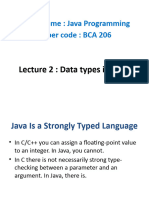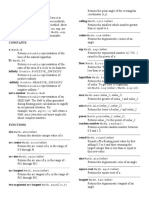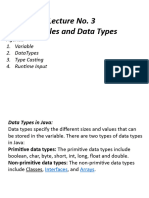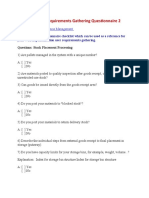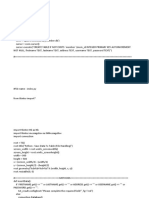0% found this document useful (0 votes)
69 views7 pagesProgramming Home Work 2
This document provides an overview of object-oriented programming concepts in Java including data types, variables, operators, and type casting. It discusses both primitive and non-primitive data types, describing their characteristics and examples. Primitive data types covered are integer, floating point, boolean, and char types. The document also reviews numeric types, strings, and type casting between primitive types.
Uploaded by
Elham HotakCopyright
© © All Rights Reserved
We take content rights seriously. If you suspect this is your content, claim it here.
Available Formats
Download as DOCX, PDF, TXT or read online on Scribd
0% found this document useful (0 votes)
69 views7 pagesProgramming Home Work 2
This document provides an overview of object-oriented programming concepts in Java including data types, variables, operators, and type casting. It discusses both primitive and non-primitive data types, describing their characteristics and examples. Primitive data types covered are integer, floating point, boolean, and char types. The document also reviews numeric types, strings, and type casting between primitive types.
Uploaded by
Elham HotakCopyright
© © All Rights Reserved
We take content rights seriously. If you suspect this is your content, claim it here.
Available Formats
Download as DOCX, PDF, TXT or read online on Scribd
/ 7










